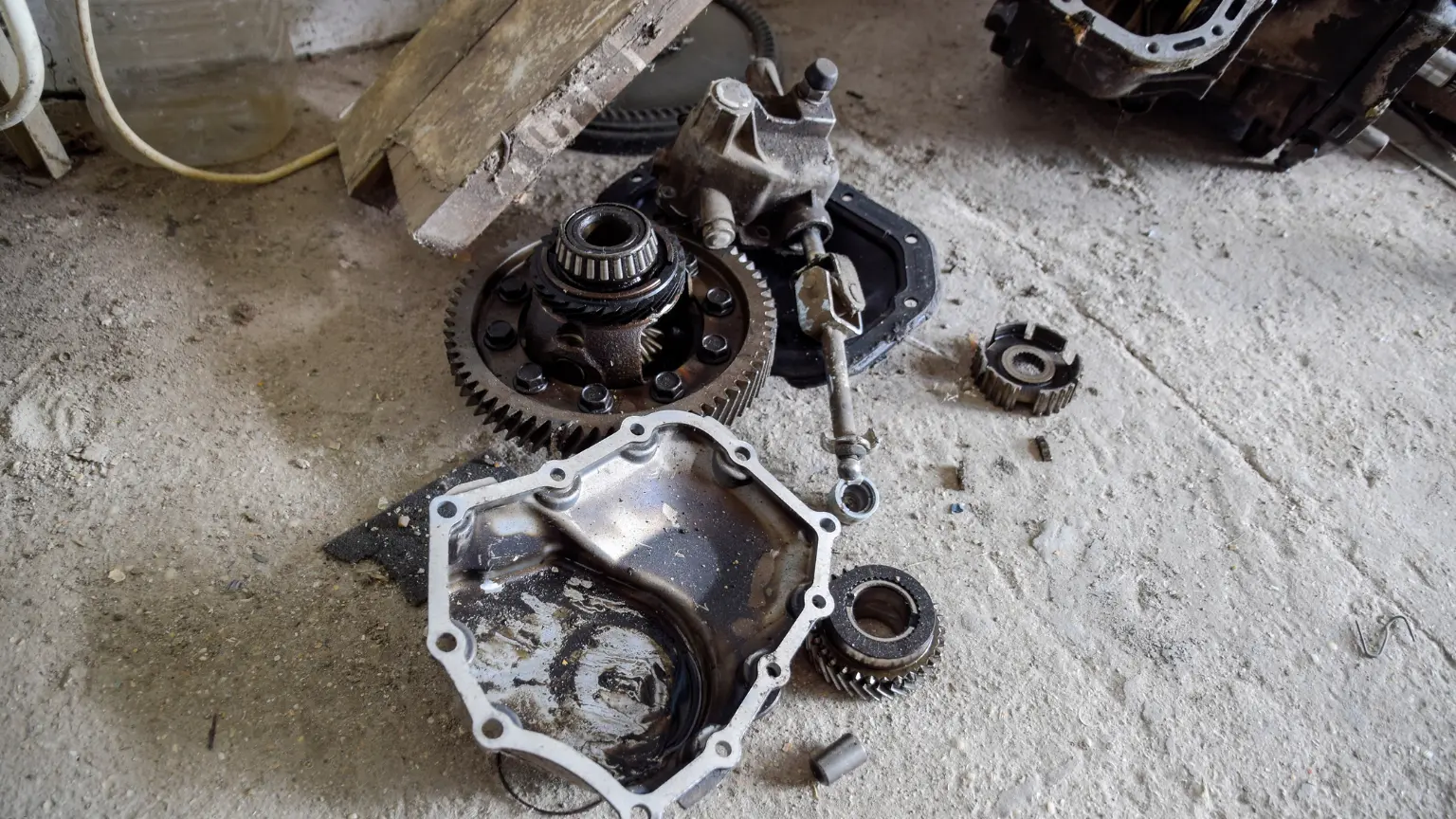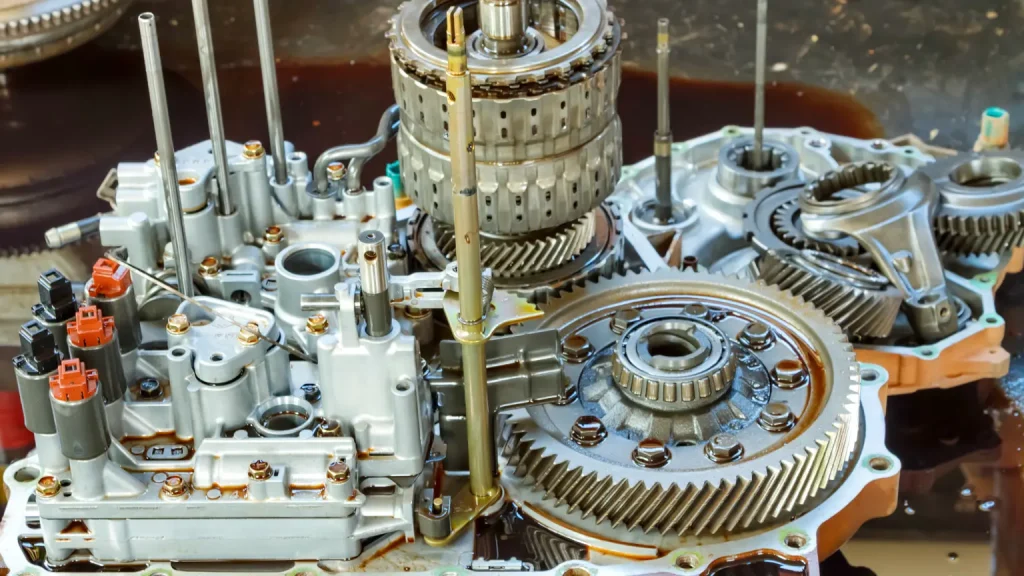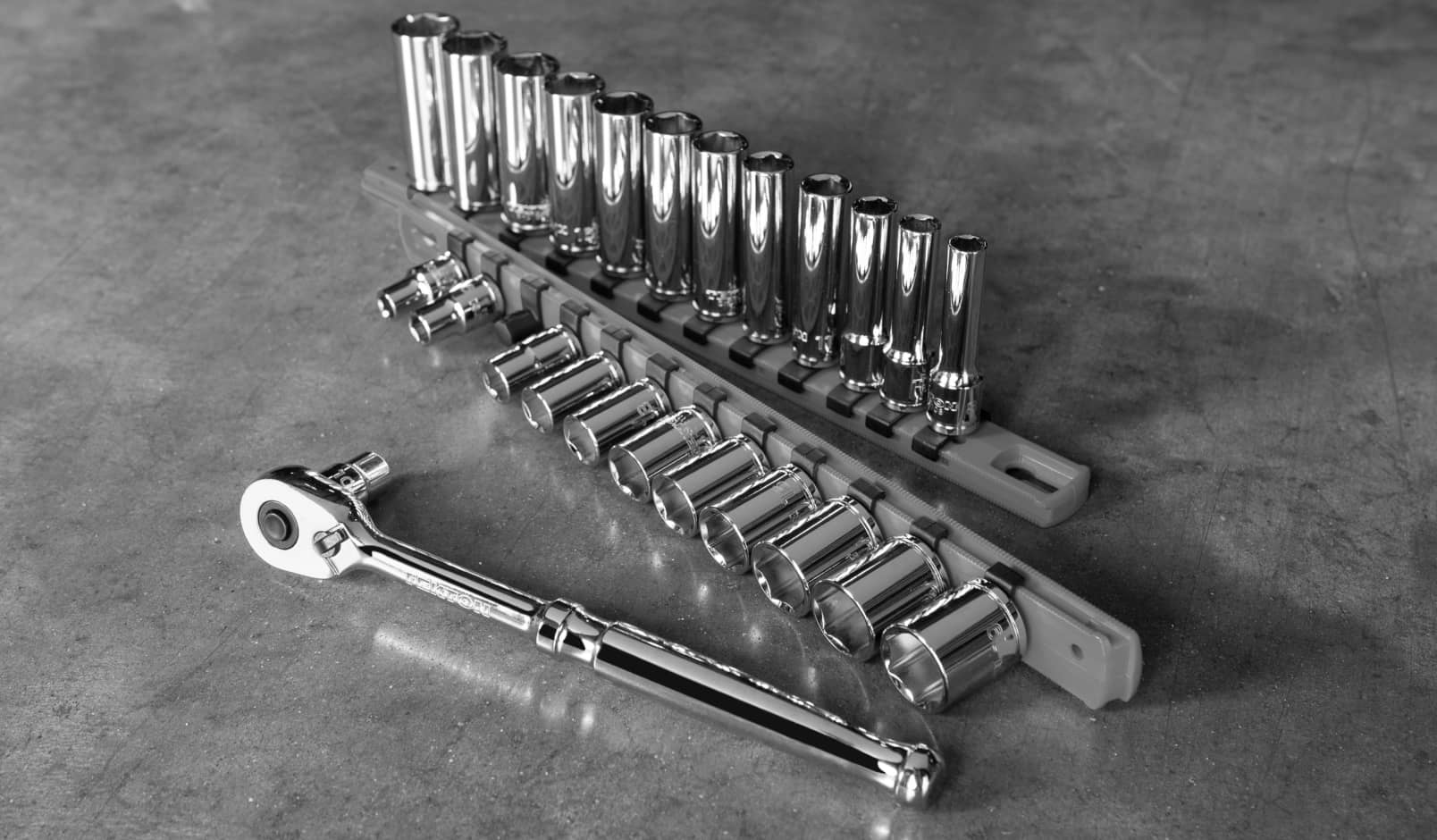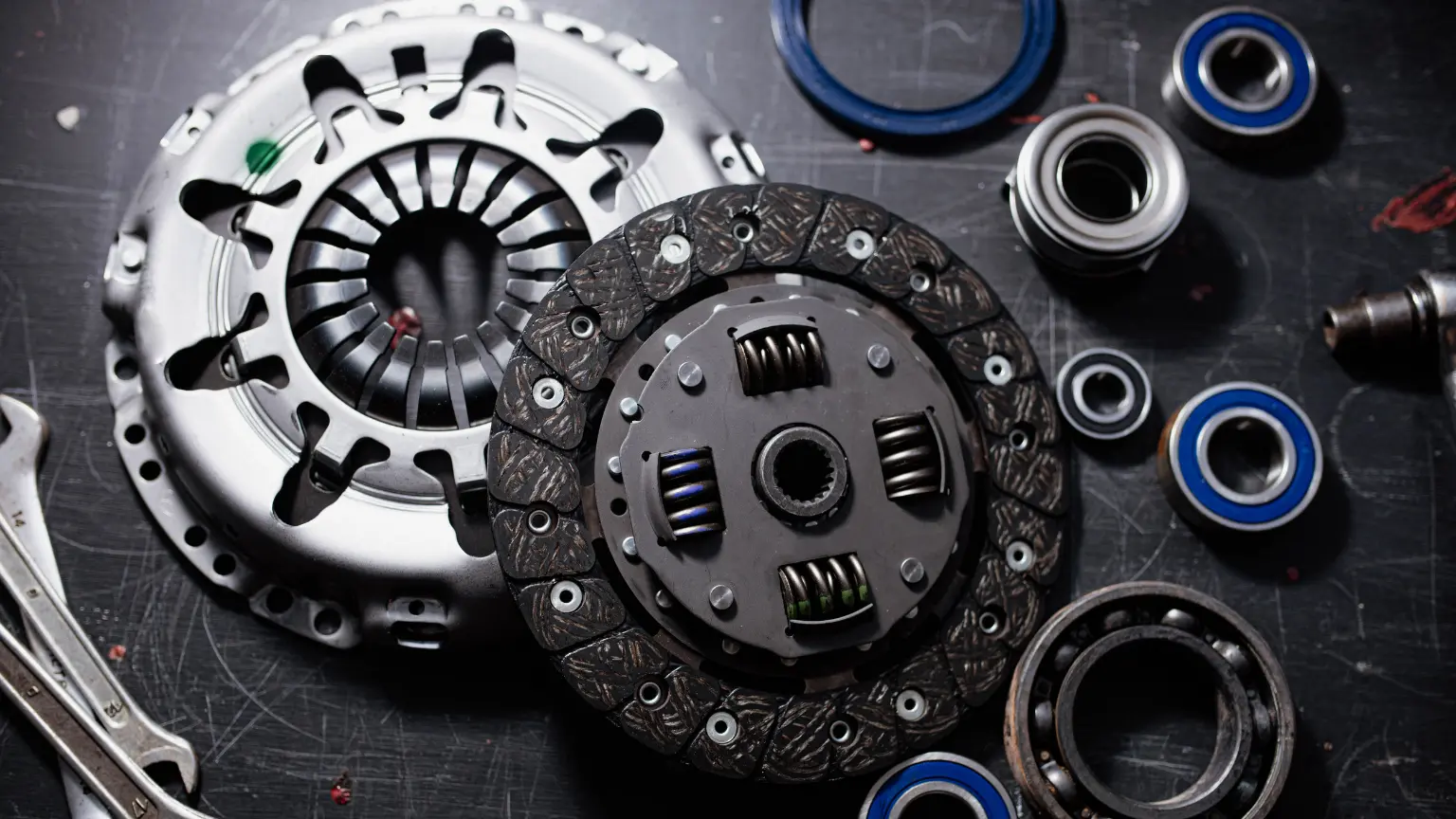Common Signs Your Transmission Needs Repair
Learn to spot and address common transmission problems—slipping, rough shifts, overheating, leaks, and noises—and discover maintenance tips and repair solutions to protect your vehicle’s performance.

Your vehicle’s transmission is a crucial component that transfers power from the engine to the wheels, allowing you to control speed and direction. When this system experiences issues, it can severely impact your car’s performance and lead to costly repairs. Identifying common transmission problems early on can help you avoid extensive damage. Proactive maintenance and repairs at a trusted transmission shop can extend your vehicle's life and save you money in the long run.
Warning Signs of Transmission Issues
Recognizing the early warning signs of transmission problems is crucial for preventing extensive damage to your vehicle. Paying attention to such symptoms and acting quickly by consulting a qualified technician can help you avoid major transmission failures, ensuring your vehicle remains safe and reliable on the road.

Transmission Slipping Symptoms
What is It?
Transmission slipping occurs when your vehicle's transmission fails to engage as it should, causing a delay or a sudden change in how power from the engine is transferred to the wheels. This problem can manifest as a hesitation or a sudden surge during acceleration, making the driving experience unpredictable and potentially unsafe. Recognizing the early signs of transmission slipping is crucial for preventing further damage to your vehicle. It's essential to understand that slipping is more than an inconvenience; it's a clear signal that something within the transmission system requires attention.
Causes of Transmission Slipping
The causes can vary widely, but common issues include low or dirty transmission fluid, worn-out clutch bands, or internal damage to the transmission. In automatic transmissions, the fluid is particularly critical as it serves multiple roles, including power transmission, lubrication, and cooling. When fluid levels are low or the fluid is contaminated, insufficient hydraulic pressure can cause the transmission to slip. Other mechanical issues, such as worn clutches or damaged gears, can also lead to slipping, each requiring a different approach to diagnosis and repair.
Erratic Acceleration and Loss of Power
Drivers might notice the engine revving unusually high before the gear finally engages or a sudden drop in the vehicle's power output during acceleration. These symptoms not only affect your vehicle’s performance but also pose a risk to safety while driving. Recognizing these signs early can help prevent a transmission failure.
When to Seek Professional Diagnosis
One should seek guidance on when it is advisable to consult a professional mechanic or transmission specialist if any signs of transmission issues appear. It's advisable to pursue a professional transmission slipping diagnosis immediately. Delaying can lead to more extensive damage and potentially higher repair costs. A qualified technician at a transmission service shop can provide a comprehensive evaluation, using specialized tools to assess your transmission's health accurately. Early diagnosis and repair can save you time and money, ensuring that your vehicle remains reliable and safe on the road.
Delayed or Rough Shifting
Understanding Shifting Issues
Delayed or rough shifting in automatic transmissions can be a clear indication of underlying issues that require immediate attention. This condition is characterized by the vehicle hesitating to move into the next gear or by a jerky, abrupt gear change. Such symptoms disrupt the smooth operation of the car and can significantly affect its performance and efficiency. Addressing these symptoms promptly at a transmission shop can prevent more severe problems in the vehicle's drivetrain system.
Main Causes
Low fluid levels can reduce the hydraulic pressure needed for shifting gears, while dirty or degraded fluid can hinder the proper functioning of the transmission’s internal components. Sensors that provide critical data for transmission operation may also fail or malfunction, leading to incorrect timing or execution of gear shifts. Identifying these issues early helps maintain the longevity and efficacy of your vehicle’s transmission.
How Contaminated Fluid Impacts Shifting Performance
Over time, the fluid can accumulate particles and debris that wear on the transmission’s internal mechanisms, causing inefficiencies and potential failures. Checking and changing the fluid according to the manufacturer's guidelines ensures that your transmission operates smoothly and reduces the likelihood of rough shifts that can strain the system.
Solutions for Rough or Hesitant Gear Shifts
This can include flushing the old transmission fluid and replacing it with new fluid that meets the vehicle manufacturer’s specifications. In some cases, repairing or replacing faulty sensors and worn parts will restore proper transmission function. As always, regular maintenance checks by professionals at an auto transmission service center can diagnose and rectify these issues early, ensuring reliable vehicle operation and preventing costly repairs.
Transmission Overheating Signs
The Symptoms
Overheating in your vehicle’s transmission can lead to substantial damage if not addressed promptly. When the system overheats, it can severely affect the performance of your vehicle, often leading to mechanical failures. Various signs can point to an overheating issue, and addressing them early can prevent long-term damage. Below are some common symptoms to look out for if you suspect your transmission is overheating:
- Burning Smell: One of the most noticeable signs of an overheating transmission is a distinct burning odor coming from the vehicle. This smell indicates that the transmission fluid is overheating and breaking down, losing its ability to lubricate and cool the system properly. As the fluid degrades, it becomes less effective in protecting internal components, which can lead to friction and heat buildup. Ignoring this smell can cause severe internal damage, so it’s essential to check fluid levels and address the issue immediately if you notice a burning odor.
- Transmission Fluid Discoloration: Transmission fluid is typically bright red, but when it overheats, it can turn dark brown or black. This color change is a clear indicator that the fluid has been compromised and is no longer providing adequate protection. Overheated fluid can lead to contamination, which in turn affects the performance of the transmission system.
- Delayed Gear Engagement: If you notice a delay when shifting gears, it could be a sign that your transmission is overheating. The heat affects the hydraulic pressure within the system, making it more difficult for the transmission to engage gears properly. This delay is often a result of degraded fluid that is no longer able to generate enough pressure to facilitate smooth gear shifts. Addressing this issue promptly can help you avoid further damage to the transmission system and ensure your vehicle continues to operate efficiently.
- Unexpected Gear Shifts: Erratic or unpredictable gear shifts can occur when the transmission overheats, confusing the system and leading to further mechanical issues. Overheating can interfere with the transmission’s ability to maintain consistent hydraulic pressure, causing the gears to shift unexpectedly. These sudden shifts can put additional strain on the system and may cause damage over time if not corrected.
- Transmission Warning Light: Many modern vehicles are equipped with a transmission warning light that alerts the driver when internal temperatures rise above normal levels. This light is a clear indicator that the transmission is overheating and needs immediate attention. Ignoring the warning light can lead to significant damage, as the system may continue to overheat and cause further issues.
Recognizing these symptoms early can save you from expensive repairs and ensure the longevity of your vehicle’s transmission. If you experience any of these signs, it’s important to address them quickly by checking fluid levels and scheduling a service with a qualified transmission specialist.

Preventive Maintenance to Avoid Overheating Issues
Understand the general maintenance practices that can help prevent transmission problems and extend its lifespan. Establishing a routine maintenance schedule is the best defense against transmission overheating. Routine preventive maintenance is essential for keeping your vehicle’s transmission running smoothly and avoiding costly repairs down the road. One of the most effective steps you can take is to follow your manufacturer’s recommended transmission fluid change schedule. Fresh, clean fluid ensures optimal lubrication and cooling, helping to prevent internal wear and overheating. It’s also important to regularly check fluid levels and inspect for leaks. Catching a small leak early can save you from major transmission damage. In addition to fluid care, be mindful of your driving habits. Gentle acceleration, smooth shifting, and avoiding sudden stops or starts reduce stress on transmission components. If you drive in harsh conditions, such as stop-and-go traffic, tow heavy loads, or operate in extreme temperatures, consider more frequent maintenance, as these factors accelerate wear. Always use the correct type of transmission fluid specified for your vehicle, as using the wrong fluid can cause shifting problems and premature failure. Allowing your vehicle to warm up for a few minutes in cold weather also helps ensure that transmission fluid circulates properly before you begin driving. Lastly, schedule regular inspections with a qualified technician who can spot early signs of trouble and address them before they escalate. By adopting these general maintenance practices, you not only extend the lifespan of your transmission but also improve your vehicle’s overall reliability and performance, ensuring safer and more efficient driving for years to come.
Causes of Transmission Fluid Leaks
Seal, gasket, or fluid line failures commonly cause transmission fluid leaks. Age and wear can cause these components to degrade and crack, allowing fluid to escape. Environmental factors such as extreme temperatures and exposure to road chemicals can accelerate this deterioration.
Unusual Noises: Grinding, Clunking, and Whining
How strange sounds such as clunking, grinding, or humming can signal potential transmission problems.
Common Sounds
Sounds associated with mechanical problems can vary, but some are commonly linked to transmission issues. Paying close attention to these sounds can help you identify problems early, which can save you from expensive repairs. Below are some noises that could indicate potential transmission trouble:
- Grinding: This noise typically occurs when internal parts are not properly lubricated, causing them to rub against each other. Grinding can also result from worn-out components, such as gears or synchronizers, which may be struggling to engage smoothly. If you notice a grinding sound, it’s essential to check the fluid levels and have the system inspected, as ignoring it could lead to further wear and eventual failure of key components.
- Clunking: A clunking sound while shifting gears can be alarming and is often a sign of damaged or worn gear synchronizers. These components allow smooth gear transitions, and when they wear out, the result can be a loud clunking noise during gear changes. This noise can also be an indication that parts within the system are loose or damaged, requiring immediate attention.
- Whining: If you hear a high-pitched whining sound while the vehicle is in gear, it could point to a fluid-related issue or a failing pump within the transmission system. A lack of proper lubrication can cause the internal components to whine as they struggle to operate under increased friction. Low fluid levels or a malfunctioning pump can quickly lead to overheating, so it’s important to investigate this noise right away.
- Buzzing or Humming: When bearings are worn or damaged, they can create a buzzing sound as they rotate. Similarly, problems with the fluid lines, such as blockages or leaks, can cause a humming noise as fluid struggles to circulate. These sounds should not be ignored, as they can lead to more significant mechanical issues if left unaddressed.
- Rattling: A rattling sound, especially at low speeds, can indicate that certain parts of the system are loose or that fluid levels are low. This noise may be caused by internal components that are not securely in place or by insufficient lubrication to keep parts moving smoothly. Addressing a rattling sound quickly can prevent more serious issues from arising, as it often signals early wear and tear.
Listening to these sounds can help you detect potential issues before they escalate. If you hear any of the noises mentioned above, it’s important to act quickly by scheduling a professional inspection. Proper maintenance and prompt attention to unusual sounds can ensure your transmission continues to function effectively and prevent major breakdowns.
Repair Options for Noisy Transmissions
For noisy transmissions, several repair options are typically considered, depending on the severity and source of the noise. Minor issues might be resolved with adjustments or parts replacements, such as new bearings or gears. More severe problems might require more comprehensive solutions, such as a full transmission overhaul. A trusted automatic transmission repair provider can assess the situation and recommend the best course of action.
Transmission Warning Signs: What to Watch For
How Dashboard Warning Lights Detect Issues
These are crucial indicators that alert drivers to various vehicle malfunctions, including transmission-related issues. The lights are connected to the vehicle’s onboard diagnostics system, which monitors the performance and health of the transmission. When this system detects an anomaly that could potentially harm the transmission, it triggers a specific warning light on the dashboard. Immediate feedback can be invaluable for catching issues before they escalate into more serious problems.

How to Use Warning Lights
Incorporating warning lights into regular vehicle maintenance routines can greatly enhance transmission care. Drivers should respond to warning lights not just with repairs but also as a prompt for preventative measures. As emphasized previously, regular checks and services after warning light incidents can help maintain the transmission in optimal condition, prolong its life, and improve overall vehicle performance.
Visiting a transmission service shop should be a priority whenever you notice unusual behavior or when warning lights indicate issues. Even if your vehicle appears to be running smoothly, periodic checks by professionals can uncover potential problems that are not obvious to the average driver. Keep your vehicle running smoothly and safely, and schedule expert transmission service with Trans Medic Transmissions. These visits are crucial for maintaining your vehicle’s health and ensuring all parts function correctly. They can also provide peace of mind by confirming the absence of hidden issues or by catching them early when they are easier and less expensive to fix.
Follow a maintenance program
Ante gravida id aenean quis egestas risus nam amet nullam leo diam diam aliquam eu eu malesuada arcu rhoncus suspendisse nulla mattis ut amet sagittis in justo egestas.

search for a trusted mechanic
Lorem ipsum dolor sit amet, consectetur adipiscing elit lobortis arcu enim urna adipiscing praesent velit viverra sit semper lorem eu cursus vel hendrerit elementum morbi curabitur etiam nibh justo, lorem aliquet donec sed sit mi dignissim at ante massa mattis.
- Neque sodales ut etiam sit amet nisl purus non tellus orci ac auctor
- Adipiscing elit ut aliquam purus sit amet viverra suspendisse potent
- Mauris commodo quis imperdiet massa tincidunt nunc pulvinar
- Excepteur sint occaecat cupidatat non proident sunt in culpa qui officia
Check the air pressure in your tires
Vitae congue eu consequat ac felis placerat vestibulum lectus mauris ultrices cursus sit amet dictum sit amet justo donec enim diam porttitor lacus luctus accumsan tortor posuere praesent tristique magna sit amet purus gravida quis blandit turpis.
Review your suspension frequently
At risus viverra adipiscing at in tellus integer feugiat nisl pretium fusce id velit ut tortor sagittis orci a scelerisque purus semper eget at lectus urna duis convallis. porta nibh venenatis cras sed felis eget neque laoreet suspendisse interdum consectetur libero id faucibus nisl donec pretium vulputate sapien nec sagittis aliquam nunc lobortis mattis aliquam faucibus purus in.
- Neque sodales ut etiam sit amet nisl purus non tellus orci ac auctor
- Adipiscing elit ut aliquam purus sit amet viverra suspendisse potent
- Mauris commodo quis imperdiet massa tincidunt nunc pulvinar
- Excepteur sint occaecat cupidatat non proident sunt in culpa qui officia
Service your vehicle as regularly as posible
At risus viverra adipiscing at in tellus integer feugiat nisl pretium fusce id velit ut tortor sagittis orci a scelerisque purus semper eget at lectus urna duis convallis. porta nibh venenatis cras sed felis eget neque laoreet suspendisse interdum consectetur libero id faucibus nisl donec pretium vulputate sapien nec sagittis aliquam nunc lobortis mattis aliquam faucibus purus in.
“Nisi quis eleifend quam adipiscing vitae aliquet bibendum enim facilisis gravida neque velit euismod in pellentesque”
Conclusion
Eget lorem dolor sed viverra ipsum nunc aliquet bibendum felis donec et odio pellentesque diam volutpat commodo sed egestas aliquam sem fringilla ut morbi tincidunt augue interdum velit euismod eu tincidunt tortor aliquam nulla facilisi aenean sed adipiscing diam donec adipiscing ut lectus arcu bibendum at varius vel pharetra nibh venenatis cras sed felis eget.


